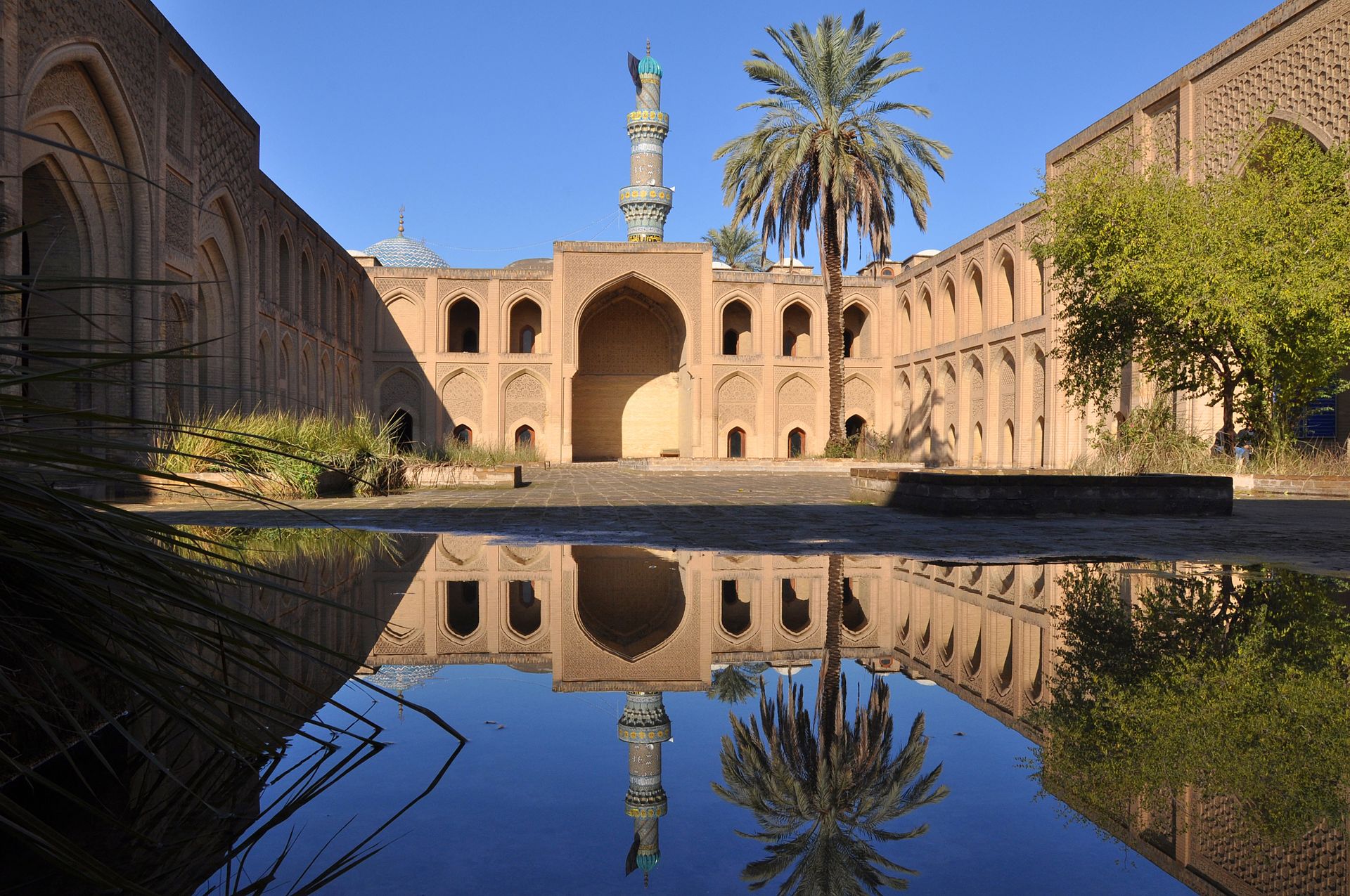Table Of Content

The paper shall follow a historical method which comprises some guidelines by which the authors utilize primary sources to conduct a historical account. Law is a critical study for the Muslim people, because of the understanding of justice on Earth as applied to God.[8] The Hanafi today is the largest school of legal thought in the Muslim world, and it was a draw for scholars to the city of Baghdad. Another school was the Bayt al-Hikma (House of Wisdom), which focused on translating texts from various languages into Arabic. Under the sponsorship of caliph al-Ma’mun (r. 813 – 833), economic support of the House of Wisdom and scholarship in general was greatly increased. Indeed, Ptolemy’s Almagest was claimed as a condition for peace by al-Ma’mun after a war between the Abbasids and the Byzantine Empire.
Baghdad's House of Wisdom: Uniting East and West to pursue knowledge
No physical trace remains of this academy today, so we cannot be sure exactly where it was located or what it looked like. Some historians even argue against exaggerated claims about its scope and purpose and the role of Ma'mūn in setting it up. But whatever its function – and many of Baghdad's scholars may not have been based physically within it – there is no doubt that the House of Wisdom has acquired a mythical status symbolising this golden age, on a par with the Library of Alexandria, 1,000 years earlier.
The House of Wisdom: Baghdad’s Intellectual Powerhouse
However it was not the norm for the well-to-do people to leave their libraries open to public or to endow them for users. Libraries of The Nizamiyyah School were somewhat similar to the House of Wisdom (Bayt al-Hikmah) for the former had had many facilities to offer for students, including student's scholarships and endowment professorship. The Nizamiyyah School libraries and Cairo libraries were reported to have their own binders, administrators, librarians and even guards, they have shared almost all supported by endowments from governments, caliphs and kings. The example of the house of wisdom was remarkably followed and its influence appeared when other many public libraries have emerged all the way from Bokhara and Merv, in the heart of Asia, on the route to China through Basra and Damascus, Algiers and Cairo. The famous geographer Yaqut al-Hamawi who had visited Merv in the late 1220s, found more than twelve libraries there opened for public.
Baghdad’s Libraries Were So Impressive They Astonished European Scholars
The house wisdom was a center of knowledge and education, it was a rival of the Constantinople's if it did not exceed it. It was the model for other libraries and similar institutions throughout the soils of Islamic civilization. When the Caliphs have had a huge collection of books and a considerable number of translations, maps, manuscripts, etc. they had to construct an appropriate place for these collections, historians have a consent that the caliphs' most desirable location for the library was the palace itself.
Center of learning (8th–9th centuries)

What was now known as Bayt al-Hikmah (the House of Wisdom) soon attracted scholars from far and wide, and rapidly expanded to include a translation house, an observatory, and accommodations for visiting scholars. In eighth-century Baghdad, the Abbasid Caliphate took a momentous decision to found a library dedicated to preserving knowledge from across the world, known as Bayt al Hikmah, the House of Wisdom. At Ancient Origins, we believe that one of the most important fields of knowledge we can pursue as human beings is our beginnings.
History Erased: The 6 Most Heartbreaking Archaeological Destructions
In his book, al-Jahith argued that animals like dogs, foxes, and wolves must have descended from a common ancestor because they shared similar characteristics and features such as four legs, fur, tail, and so on. The most famous of all the Baghdad translators, Hunayn ibn Ishāq, was born in the ancient Christian city of Hira and never converted to Islam. He would spend many years travelling around the world in his search for Greek manuscripts. It is the medical work of the physician Galen that is his most important legacy, for not only did it open up the Islamic world to this great treasure, in many cases it is only via these Arabic translations that much of Galen's work reaches us today. For centuries following the fall of Rome, Western Europe was a benighted backwater, a world of subsistence farming, minimal literacy, and violent conflict.
Al-Mamun: A patron of sciences
It was followed by another war from 2013 to 2017 and a low-level insurgency from 2017, which included suicide bombings in January 2018 and January 2021.[85] Priceless collection of artifacts in the National Museum of Iraq was looted by Iraqi citizens during the 2003 US-led invasion. Besides their translations of earlier works and their commentaries on them, scholars at the Bayt al-Hikma produced important original research. For example, the noted mathematician al-Khwarizmi worked in al-Ma’mun’s House of Wisdom and is famous for his contributions to the development of algebra. He was known as a mathematician and an astronomer in the House of Wisdom, and is also known for his book Kitab al-Jabr in which he develops a number of algorithms. The application of the word “algebra” to mathematics and the etymology of the word “algorithm” can be traced back to al-Khwarizmi — the actual concept of an algorithm dates back before the time of Euclid.
Assassin’s Creed Mirage – How to Kill Order Member “Mastermind in the Shadows” Al-Rabisu - Wccftech
Assassin’s Creed Mirage – How to Kill Order Member “Mastermind in the Shadows” Al-Rabisu.
Posted: Sat, 14 Oct 2023 07:00:00 GMT [source]
Ancient Egypt
Eventually this compilation of different materials became so large that al-Ma’mun had to build an extension to the original building, turning it to a large academy which, then, came to be known as the House of Wisdom. It became one of the greatest centers of medieval wisdom and contributed greatly to the scientific movement which had started in the earlier centuries. Although scholarship and translation indeed flourished in 8th- and 9th-century Baghdad, and some of that activity took place in association with the library and its collection, there is little evidence that Bayt al-Hikmah was at the centre of any of these trends. The translation of Greek literature into Arabic—perhaps the most cited activity identified with Bayt al-Hikmah—took place elsewhere entirely, as did the work of Greco-Arabic translators such as Ḥunayn ibn Isḥāq and Yaʿqūb ibn Isḥāq al-Ṣabāḥ al-Kindī. Although it is unknown whether the miḥnah had any direct impact on Bayt al-Hikmah, mention of the library ends almost entirely after the death of al-Maʾmūn in 833.
By bringing together top experts and authors, this archaeology website explores lost civilizations, examines sacred writings, tours ancient places, investigates ancient discoveries and questions mysterious happenings. Our open community is dedicated to digging into the origins of our species on planet earth, and question wherever the discoveries might take us. We’re the only Pop Archaeology site combining scientific research with out-of-the-box perspectives.
House of Wisdom Walkthrough - Assassin's Creed Mirage Guide - IGN
House of Wisdom Walkthrough - Assassin's Creed Mirage Guide.
Posted: Thu, 05 Oct 2023 07:00:00 GMT [source]
The arches and the Unknown Soldier’s monument are all located on a parade ground complex in Zawrāʾ Park, near Al-Karkh. Under the Baʿathist regime this was the site of numerous rallies and nationalist parades. A cultural revival in the post-1958 period produced many modern monuments, the work of contemporary artists and sculptors. During the construction of the city, gates were placed at the entrances of the major roads into the city, in order to funnel traffic into the city. The Kufah Gate was on a major road that pilgrims took to Mecca, and the Anbar gate linked the bridges over the canals and Euphrates River to the city.
Exactly 1,200 years after its foundation, I was born in Karradat Mariam, a Shia district of Baghdad with a large Christian community, a stone's throw away from today's Green Zone and a few miles south of the spot where one of Baghdad's most famous rulers was born in 786. Half Arab, half Persian, this enigmatic caliph was destined to become the greatest patron of science in the cavalcade of Islamic rulers, and the person responsible for initiating the world's most impressive period of scholarship and learning since Ancient Greece. Famous scholars from that period, such as the Banu Musa Brothers, Al-Khwarizmi and Al-Battani were attracted to the House of Wisdom where a variety of languages were spoken and written enabling the transfer of knowledge from foreign manuscripts in Persian, Syriac, Greek and other into Arabic. In Basra for example, the library held more than 15,000 books which included ancient works that were translated into Arabic.
Abū Yūsuf Yaʿqūb ibn Isḥaq al-Kindī[40] was also another historical figure that worked at the House of Wisdom. Al-Kindī is the most famous for being the first person to introduce Aristotle's philosophy to the Arabic people. He fused Aristotle's philosophy with Islamic theology, which created an intellectual platform for philosophers and theologians to debate over 400 years. A fellow expert on Aristotle was Abū ʿUthmān al-Jāḥiẓ, who was born in Basra around 776 but he spent most of his life in Baghdad. Al-Ma’mun employed al-Jāḥiẓ as a personal tutor for his children, but he had to dismiss him because al-Jāḥiẓ was "Goggled-Eyed", i.e., he had wide, staring eyes which made him frightening to look at.
Baghdad is known for its famous Mutanabbi street which is well established for bookselling and has often been referred to as the heart and soul of the Baghdad literary and intellectual community. The annual International Book Fair in Baghdad is well known to the international publishing world as a promising publishing event in the region after years of instability. Not only did the Muslims in this era build observatories but soon after in Central Asia, they built a paper mill, which then led to the production of dyes, inks, glues, and even book bindings.
The House of Wisdom is the subject of an active dispute over its functions and existence as a formal academy, an issue complicated by a lack of physical evidence following the collapse of the Abbasid Caliphate and a reliance on corroboration of literary sources to construct a narrative. The House of Wisdom came into being as a library, translation institute and academy of scholars from across the empire. Beginning as a project to protect knowledge, including philosophy, astronomy, science, mathematics and literature, it quickly became, and is still considered today, a symbol of the merging and expansion of intellectual traditions from across different cultures and nations. The library grew to become the flower of the Islamic Golden Age, a period between the 7th and 13th centuries of great intellectual growth and discovery in the Islamic world.

No comments:
Post a Comment